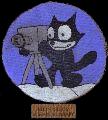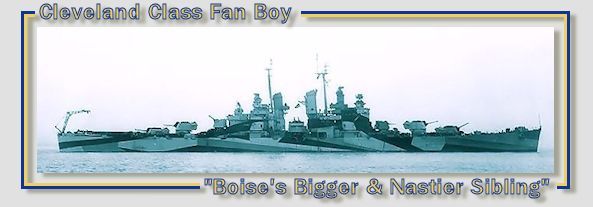tiemanjw
Posts: 580
Joined: 12/6/2008
Status: offline

|
quote:
Detecting a submarine with hydrophones was quite difficult, and detecting it with sonar was all but but impossible. Sonar was highly directional. This allowed sonar to get a good bearing on its target, but it also limited the usefulness of sonar for search, since it took several seconds to listen for a return on a single bearing. The sonars of the Pacific War were thus fire control systems rather than search systems, with effective search sonars not becoming available until 1946. Range was also limited, rarely exceeding 3000 yards (2700m) even under the most favorable conditions. Sonar was generally ineffective at speeds over about 10 knots, requiring "sprint and drift" tactics in which the antisubmarine warship had to periodically slow almost to a stop to make best use of its sonar. Sonar could not determine depth with any accuracy and was unable to track a target immediately underneath it. Thus, a submarine could sometimes evade a depth charge attack by maneuvering sharply just as the attacker passed overhead and lost sonar contact. The depth charge explosions themselves blinded sonar, and a submarine that survived a depth charge attack could sometimes break contact behind the "wall" of sonar interference created by the depth charges.
Typical ASW attacks would have one DD (or escort) "hold" the contact while another escort made attack runs. I'm not sure I'd want to be under the attacker in this case...
Most subs were found with radar. WWII subs were surface craft that could go under water. They were not true submarines in the modern sense of the word.
The game does not model either of these in anything other than the abstract. According to the manual:
Sequence for sub vs surface:
chance for early detection of the sub by the TF escort
sub attack
sub dive to escape
escort attack
Sub has an increased chance of attacking (presumably a "high value" ship)
subs max speed
TF cruise speed
sub crews experience
prior detection of the sub
You can't control the subs max speed or the sub crew experience. However you can help yourself by making sure your TF cruse speed is "good" (don't put a slow ASW ship in an otherwise fast TF), and by "prior detection of the sub".
The effectiveness of a TFs escorts is determined by its:
maximum speed
crew experience
ASW weapons
total number of escorts in the TF
So faster escorts are better (DDs, especially fletchers). And more escorts are better. Without knowing the weights, it is impossible to say where the slower cruise speed escorts (making attacks more likely) becomes a handicap over the more escorts is better mantra.
quote:
The ASW game is more nuanced than simply dropping dozens of ASW ships in a hex and having hundreds of aircraft fly ASW duties. I'm actually coming round to the opinion that it's naval search that's the more critical mission for ASW aircraft than ASW itself. Getting DL high prior to the naval movement phases seems to be the key.
I agree, and rarely ever use ASW air missions any more. The range is just to short. Remember the order of the turn:
Night TF movement
Night air (including ASW)
day TF movement
day air
And DL is set to 0 at the beginning of each day and night resolution phase (MDL is reduced by 1 at each of these)
So your TF is not really covered by the search and ASW A/C it has unless they are searching further than you can move.
For example, if your search is set to 6 hexes and you have some in the day, and some in the night phase
T-1 (day) - search goes out to 6 hexes, ASW to 3 hexes (normal range for TBF) and sub DL goes up 1 (per A/C that spots it)
T (night) - sub DL goes to 0, MDL goes down 1. TF moves 5 hexes, crosses path with sub - whatever you have on navS goes out another 6 hexes
T (day) - sub DL goes to 0, MDL goes down 1. TF moves 5 hexes, crosses path with sub. It couldn't even see the sub 24 hr ago, so night search is important.
As you can see, it becomes important to have many A/C spot the sub the phase BEFORE you execute the move. ASW A/C won't help you at all (they will kill more subs you get close too, but won't help you avoid while moving).
For search, if you have 36 A/C on search out to 6 hexes, you should (on average) get +1 DL on the sub (assuming he sees it) for the next phase. A 1 DL the phase before is useless when you go to move (DL set to 0 and MDL-- prior to moving).
So to really avoid subs you need to soak an area with search. And that search needs to hit where you are going, not where you are. By basing a large amount of search organic to the CVs, and using a lot of that with "ASW" setting, you are not giving yourself the best chance to avoid them. Use NavS (day and night), in good numbers. Use DTs as soon as you can to push them out further. If speed is not important use WPs to zig zag or only advance a few hexes at a time. If speed is important consider "full" speed to jet past the subs.
|
 Printable Version
Printable Version

















 At least I think it was.
At least I think it was.  New Messages
New Messages No New Messages
No New Messages Hot Topic w/ New Messages
Hot Topic w/ New Messages Hot Topic w/o New Messages
Hot Topic w/o New Messages Locked w/ New Messages
Locked w/ New Messages Locked w/o New Messages
Locked w/o New Messages Post New Thread
Post New Thread